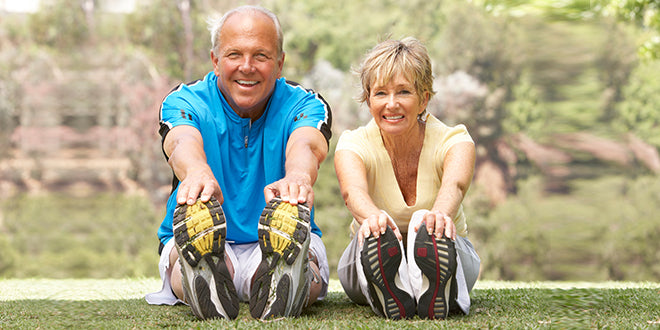Paul and I are in our mid 50’s now and for all intents and purposes we feel about the same as we did in our 40’s. However, when we travel long distances in our truck, we do feel like we have been on a long horseback ride when we try to walk. We start out walking a bit stiffly and need to take a few steps to walk normally again.
Recently a study came out of Duke that we think you should know about.
The finding suggests that you probably need to start basic strength and endurance efforts well before you are even 50 if you want to preserve those skills to keep you mobile and independent later in life.
“Typically, functional tests are conducted on people in their 70s and 80s, and by then you've missed 40 years of opportunities to remedy problems," said Miriam C. Morey, Ph.D., senior fellow in the Center for the Study of Aging and Human Development at Duke University School of Medicine. Morey is senior author of research published in the Journals of Gerontology: Medical Sciences.
The study included a group of 775 participants enrolled in the Measurement to Understand the Reclassification of Disease Of Cabarrus/Kannapolis (MURDOCK) Study. The MURDOCK Study is Duke Health's longitudinal clinical research study based at the North Carolina Research Campus in Kannapolis, N.C. The MURDOCK community registry and bio-repository includes more than 12,000 participants and nearly 460,000 biological specimens.
For the MURDOCK Physical Performance Lifespan Study, the Duke-led team enrolled participants ranging in age from their 30s through their 100s, with broad representation across sexes and races.
All participants performed the same simple tasks to demonstrate strength, endurance or balance: rising from a chair repeatedly for 30 seconds; standing on one leg for a minute; and walking for six minutes. Additionally, their walking speed was measured over a distance of about 10 yards.
Men generally performed better than women on the tasks, and younger people outperformed older participants. But the age at which declines in physical ability began to appear -- in the decade of the 50s -- were consistent regardless of gender or other demographic features.
Specifically, both men and women in that mid-life decade began to slip in their ability to stand on one leg and rise from a chair. The decline continued through the next decades. Further differences in aerobic endurance and gait speed were observed beginning with participants in their 60s and 70s.
The study provides physical ability benchmarks that could be easily performed and measured in clinical exams, providing a way to detect problems earlier.
Our research reinforces a life-span approach to maintaining physical ability -- don't wait until you are 80 years old and cannot get out of a chair," said lead author Katherine S. Hall, Ph.D., assistant professor of medicine at Duke. "People often misinterpret 'aging' to mean 'aged', and that issues of functional independence aren't important until later in life. This bias can exist among researchers and healthcare providers, too. The good news is, with proper attention and effort, the ability to function independently can often be preserved with regular exercise.”
Hall and Morey said the next phase of research will be to study blood samples of the participants to determine whether there are biological markers that correlate with declines in physical ability. They are also revisiting the study participants for two-year checkups.
So, for all of you who think you are no different than when you were in your 40’s, you really are. If you still want to be able to bend over later in your life, you had better not wait any longer to start. It looks like that aging thing will be creeping up on you and when it does, you probably won’t ever get back the functionality and independence you lost.
As for Paul and I, it can be quite difficult to maintain a daily routine that includes exercise and abundant movement, especially when we are on the road for many hours. However, we have recently renewed our commitment to make exercise the number one priority in the beginning of the day so we don’t allow work or other activities to reduce it so low that it becomes a forgotten idea. We truly hope you will consider making it a higher priority as well.







